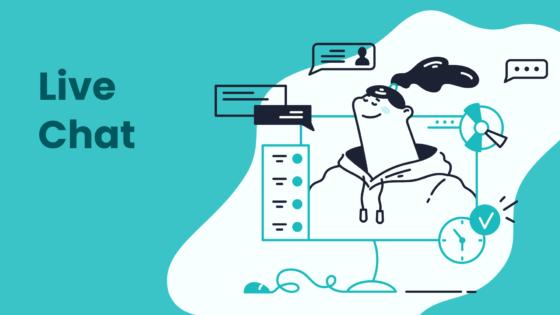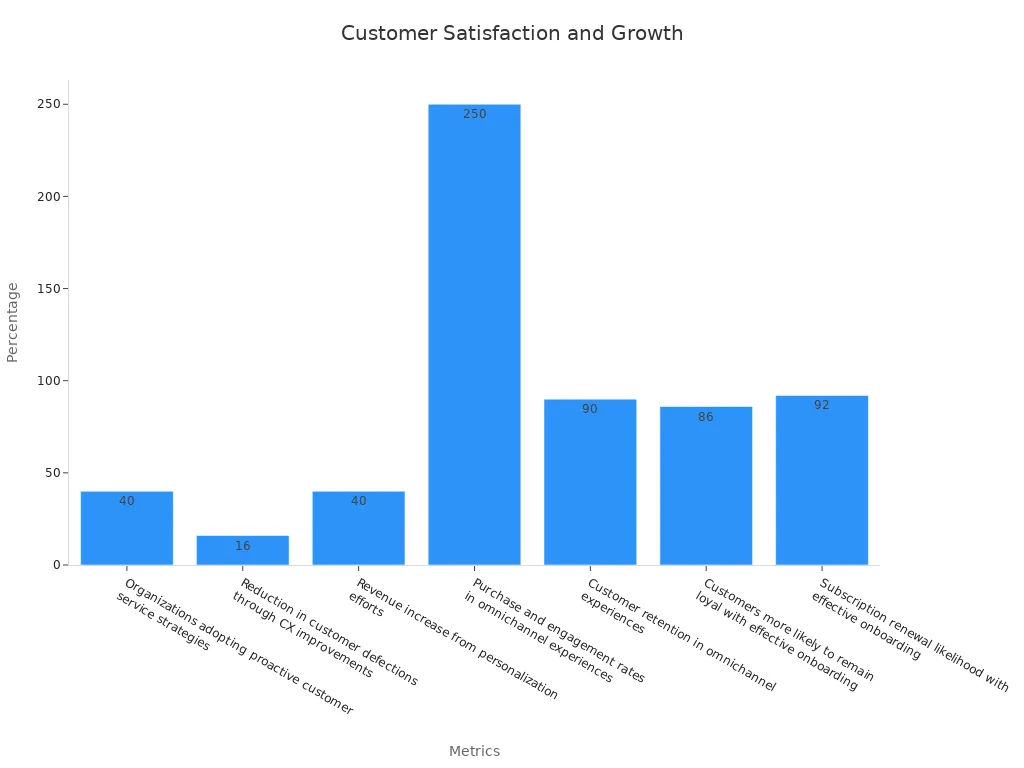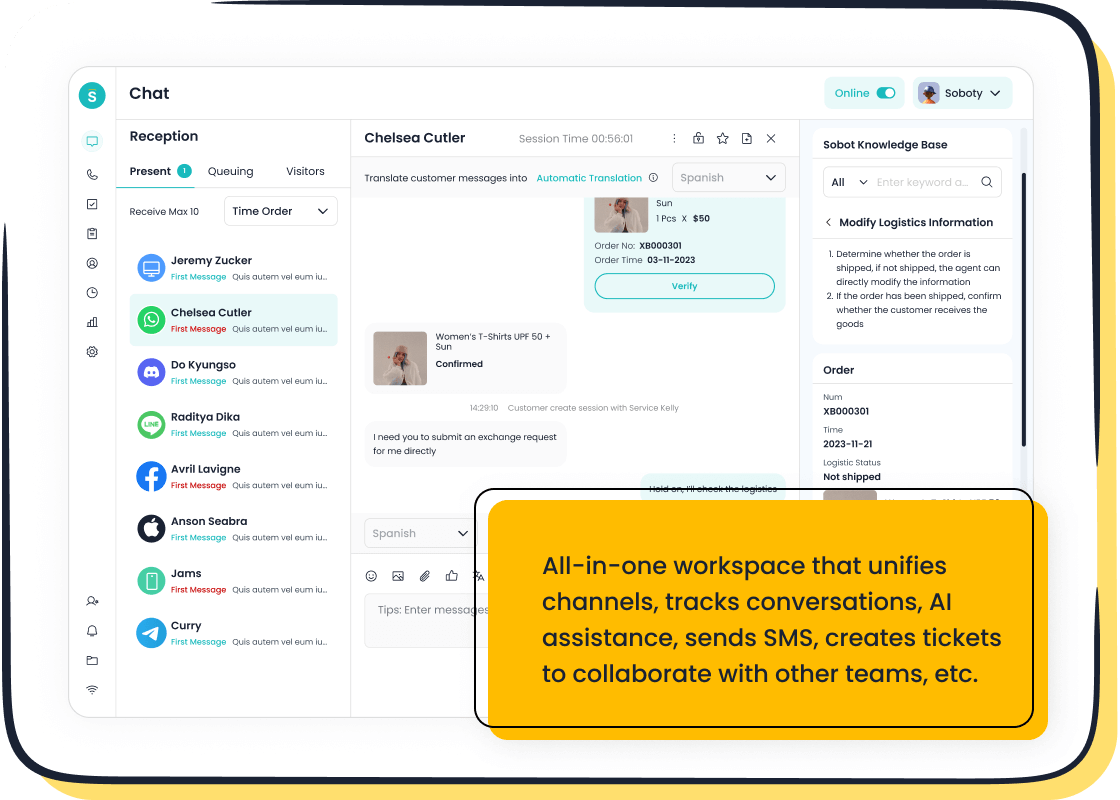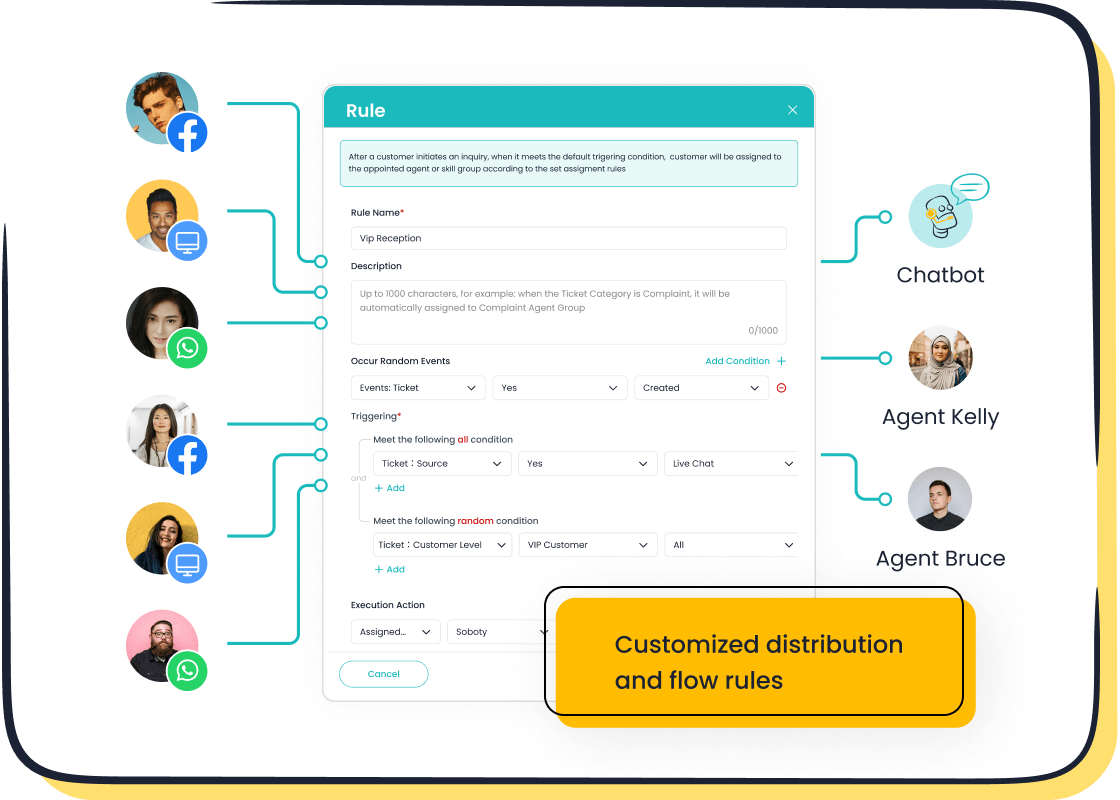How Customer Satisfaction Drives Financial Growth in 2025

Customer satisfaction shapes financial growth more than ever in 2025. Companies that focus on customer satisfaction see real financial results. For example, businesses using proactive customer service strategies report a 40% revenue boost, and organizations with strong customer experience achieve nearly double the revenue growth of their peers. The following table shows how customer satisfaction directly impacts financial performance:
| Metric / Trend | Numerical Value | Financial Impact / Insight |
|---|---|---|
| Organizations adopting proactive customer service strategies | 40% | Revenue growth from service as a profit center |
| Omnichannel engagement purchase rates | 250% higher | Increased sales and engagement |
| Customer retention in omnichannel experiences | 90% higher | Sustained financial growth |
| Excellent service leads to repeat purchase | 93% more likely | Higher customer lifetime value |
| Consumers willing to pay more for great experience | 61% | Willing to pay at least 5% extra |

Sobot and Sobot AI help businesses deliver superior customer satisfaction through unified engagement tools and AI-powered automation. Companies using these solutions often see higher conversion rates and improved customer loyalty. The benefits of customer satisfaction include increased revenue, reduced churn, and stronger brand loyalty.
Customer Satisfaction and Financial Performance
Key Metrics for Customer Satisfaction
Customer satisfaction and financial performance connect closely in today’s business world. Companies use several key metrics to measure customer satisfaction performance. The Customer Satisfaction Score (CSAT) stands out as a primary indicator. CSAT measures how well a company meets customer expectations. Higher CSAT scores often mean happier customers and better company results. Businesses also track Net Promoter Score (NPS) and Customer Effort Score (CES). These metrics help companies understand loyalty, retention, and the ease of customer interactions.
Research shows that customer satisfaction is the most reliable predictor of financial outcomes. It links directly to sales growth, gross margins, operating cash flow, market share, and shareholder return. For example, studies across 21 companies found that customer satisfaction outperforms NPS in predicting financial success. Companies that focus on customer satisfaction performance see more repeat sales, fewer lost customers, and lower complaint costs. GlobalMart, for instance, reduced service issues by 50% and saved $600,000 each year by improving customer satisfaction.
| Financial Metric | Explanation |
|---|---|
| Revenue per customer | Satisfied customers buy more and upgrade, increasing revenue. |
| Reduced complaint costs | Fewer errors and complaints lower handling costs. |
| Increased sales | Positive experiences drive word-of-mouth and boost sales. |
| Increased repeat sales | Satisfied customers return, raising profitability. |
| Fewer lost customers | High satisfaction reduces churn and protects revenue. |
| Reduced customer service costs | Better service design cuts support needs and improves profits. |
Trends in 2025
In 2025, several trends shape customer satisfaction and financial performance. Automation and AI play a bigger role. Gartner predicts that 80% of customer service organizations will use generative AI by 2025. Companies like Moen have improved first-call resolution and reduced wait times with cloud-based service software. Generative AI boosts agent productivity and provides faster, more human-like responses. BCG reports a 10-20% productivity increase from these tools.
Trust and privacy remain important. As AI grows, companies must protect customer data and maintain trust. Human agents still matter, especially for emotional support. Businesses now integrate data from systems like ERP and CRM to solve problems before they grow. This proactive approach meets rising customer expectations for fast and reliable service.
Sobot helps companies keep up with these trends. Its Live Chat and AI-powered solutions let businesses offer quick, personalized support across channels. This approach improves customer satisfaction and financial performance by increasing efficiency and loyalty. Companies that use these tools stay ahead in a fast-changing market.
Benefits of Customer Satisfaction for Revenue Growth

Repeat Business and Referrals
The benefits of customer satisfaction extend far beyond a single sale. Satisfied customers return to buy again and often recommend a business to others. This cycle creates a steady stream of revenue. Studies show that even a 5% increase in customer retention can boost profits by 25% to 95%. When customers have a positive experience, they are more likely to make repeat purchases and refer friends or family. In fact, 92% of consumers trust recommendations from people they know, making referrals a powerful growth driver.
- B2B firms with referral programs see 86% more revenue growth than those without.
- Customers referred by others are 50% more likely to buy again.
- Word-of-mouth marketing generates five times more sales than paid ads.

Sobot’s Live Chat helps businesses capture these benefits of customer satisfaction by providing instant, personalized support. With omnichannel engagement, Sobot’s ecommerce solutions make it easy for customers to interact on their preferred platforms, leading to higher Net Promoter Scores (NPS) and more referrals. Sobot’s analytics also help companies track repeat business and identify loyal customers.
Tip: Businesses that use Sobot Live Chat can see up to a 38% increase in conversion rates, turning more visitors into loyal customers.
Brand Loyalty and Market Share
Brand loyalty grows when customers feel valued and supported. The benefits of customer satisfaction include stronger loyalty, higher spending, and greater market share. Loyal customers spend 67% more than new ones and generate 2.5 times more revenue. A 5% increase in loyalty can raise profits by up to 85%. Companies with high customer satisfaction often lead their industries in market share.
| Statistic | Impact on Brand Loyalty / Market Share | Source |
|---|---|---|
| 65% of retail business comes from loyal customers who spend 67% more than new customers | Loyal customers drive sales | Capital One Shopping |
| Brand loyal customers generate 2.5x more revenue than new customers | Loyalty increases lifetime value | Capital One Shopping |
| Companies with high customer loyalty have NPS scores 3x higher than competitors | High satisfaction leads to loyalty | Bain & Company |
| 86% of brand-loyal consumers recommend their favorite brand to others | Loyalty increases referrals | Capital One Shopping |
Sobot’s omnichannel solutions help brands deliver consistent service, which builds trust and loyalty. By unifying customer interactions, Sobot enables companies to provide seamless experiences that keep customers coming back. The benefits of customer satisfaction become clear as businesses grow their loyal customer base and expand their market share.
Financial Benefits of Customer Satisfaction: Cost Reduction
Lower Churn and Retention Costs
Customer satisfaction helps companies keep their customers longer. When people feel happy with a service, they stay with the brand and do not switch to others. This loyalty saves businesses money because keeping a customer costs less than finding a new one. Companies that focus on customer satisfaction see lower churn rates and higher customer retention.
- An HR SaaS Startup reduced customer churn by 23% after using AI-driven support automation. The company also improved revenue retention by ₹47 lakhs each year and responded to customers 96% faster.
- An Indian FinTech company lowered agent turnover from 42% to 15%. This change saved ₹438,000 every year in churn costs. Agent satisfaction also rose from 6.2 to 8.7 out of 10 because AI handled routine tasks.
- A Project Management SaaS company cut customer churn by 15%. The company used the money saved on support costs to improve its product, which raised customer satisfaction from 78% to 89%.
Sobot’s work with OPPO shows these results in action. OPPO, a global smart device leader, used Sobot’s AI-powered chatbot and ticketing system to handle more customer questions quickly. The chatbot resolved 83% of issues, and OPPO saw a 57% increase in repurchase rates. The company also achieved a 94% positive feedback rate. These results show how customer satisfaction leads to better customer retention and lower churn costs.
Note: Companies that invest in customer satisfaction often see a direct link to lower churn and higher profits.
Reduced Support Expenses
Customer satisfaction also helps companies spend less on support. When customers get fast and helpful answers, they need less help in the future. This reduces the number of support tickets and the time agents spend on each case. AI and automation play a big role in making support more efficient.
Sobot’s solutions use AI to answer common questions and automate simple tasks. This lets human agents focus on more complex problems. For example, OPPO used Sobot’s AI chatbot to handle repetitive questions, which freed up agents for important issues. Sobot also helped OPPO cut knowledge base maintenance by 90%. These changes lowered support costs and made the team more efficient.
| Benefit | How Sobot Helps | Result for Business |
|---|---|---|
| Fewer support tickets | AI chatbots answer common questions | Lower support costs |
| Faster response times | Automation speeds up replies | Higher customer satisfaction |
| Less agent workload | Routine tasks handled by AI | Agents focus on complex issues |
| Lower training and turnover | AI supports agents with information | Reduced hiring and training costs |
The financial benefits of customer satisfaction include more than just higher sales. Companies also save money by reducing support expenses and improving efficiency. Sobot’s AI and automation features help businesses achieve these savings while keeping customers happy.
Maximizing Customer Lifetime Value

Increasing CLV with Sobot Solutions
Customer lifetime value (CLV) measures the total revenue a business earns from a customer over time. Companies that focus on customer satisfaction see higher CLV. Sobot helps businesses achieve this by improving efficiency, reducing costs, and raising satisfaction scores. For example, after using Sobot, companies reported a sixfold increase in efficiency, a 25% drop in costs, and a 95% customer satisfaction score. These improvements come from automating routine tasks and using AI analytics to understand customer needs.
The following table shows how different strategies and metrics impact CLV and customer satisfaction:
| Metric / Strategy | Description / Impact on CLV and Customer Satisfaction |
|---|---|
| Purchase Frequency | More purchases increase total spend and CLV. |
| Average Order Value | Higher order values boost revenue per transaction. |
| Customer Retention Rate | Keeping customers longer increases their lifetime value. |
| Churn Rate | Lower churn means better loyalty and higher CLV. |
| Net Promoter Score (NPS) | High NPS shows strong satisfaction and loyalty. |
| Personalization | Tailored offers drive engagement and repeat business. |
| Loyalty Programs | Rewards encourage repeat purchases and retention. |
| Exceptional Customer Service | Fast, helpful support reduces churn and builds loyalty. |
| Predictive Analytics | Forecasts help improve retention and CLV. |
| CRM Systems | Track data to personalize service and grow CLV. |
| Omnichannel Marketing | Seamless experiences increase satisfaction and repeat purchases. |
Sobot’s unified platform brings these strategies together. Businesses can track customer satisfaction, personalize interactions, and deliver fast support across channels.
Applications in Ecommerce and Service Centers
Ecommerce and service centers use customer satisfaction strategies to maximize CLV. Sobot’s solutions help these businesses by offering omnichannel support, AI-powered chatbots, and real-time analytics. Companies can cross-sell and upsell, increasing the average order value. Loyalty programs, like those used by Starbucks and Sephora, reward repeat business and boost retention. Research shows that 86% of buyers will pay more for better experiences (PwC). Sobot’s tools make it easy to gather feedback, segment customers, and personalize offers.
Service centers benefit from Sobot’s automation and knowledge base features. Agents resolve issues faster, leading to higher customer satisfaction and lower churn. Businesses can use predictive analytics to identify at-risk customers and take action to keep them loyal. By focusing on customer satisfaction, ecommerce and service centers see higher repeat purchase rates, stronger loyalty, and greater lifetime value.
Actionable Steps to Improve Customer Satisfaction
Leveraging Sobot Live Chat
Businesses can take clear steps to boost customer satisfaction using Sobot Live Chat. This tool offers real-time assistance, which reduces response times and helps solve problems quickly. Customers find it easy to use because they can chat without leaving the website or app. Agents can handle several chats at once, which increases productivity and keeps wait times low. Sobot Live Chat also provides analytics, so companies can track customer interactions and measure satisfaction. These insights help teams improve service and spot trends.
- Real-time support leads to faster solutions and happier customers.
- Customers enjoy the convenience of chatting directly from any device.
- Agents manage multiple conversations, improving efficiency.
- Analytics show what customers need and how they feel about the service.
- Proactive chat features help turn visitors into buyers, raising conversion rates.
Sobot Live Chat supports many channels, including WhatsApp, Facebook, and Instagram. This omnichannel approach ensures no customer is missed, which strengthens customer satisfaction and loyalty. Companies like OPPO have seen higher positive feedback and repeat purchases after using Sobot’s solutions.
Data-Driven Strategies for 2025
Companies can use data-driven strategies to improve customer satisfaction in 2025. Predictive analytics help forecast trends and understand what customers want before they ask. Personalization becomes easier when businesses collect feedback and segment their audience. AI-driven automation allows companies to respond faster and tailor the customer experience.
- Predictive analytics forecast customer needs and guide smarter decisions.
- Personalization increases engagement and loyalty by using customer data.
- Real-time data helps adjust prices and offers, keeping customers satisfied.
- Continuous feedback collection ensures products and services meet expectations.
- Transparency builds trust when companies share data-backed results.
Research shows that 80% of customers prefer brands that offer personalized experiences (source). Companies with strong omnichannel strategies keep 89% of their customers. Sobot’s analytics and AI tools make it easy to act on these strategies, helping businesses deliver better customer satisfaction and drive financial growth.
Recent studies confirm a strong link between customer satisfaction and financial growth. Insurers with high customer satisfaction achieve better profits, and supermarkets see more loyalty and higher spending from satisfied shoppers. Sobot Live Chat helps companies improve customer satisfaction by offering fast, clear support across channels. Businesses should review their current strategies and use data-driven tools for 2025. Making customer satisfaction a core focus leads to lasting financial success.
FAQ
What is customer satisfaction, and why does it matter for financial growth?
Customer satisfaction measures how well a company meets customer needs. High satisfaction leads to more repeat purchases and referrals. Research shows that companies with high satisfaction scores see up to 40% more revenue growth (Forbes).
How does customer satisfaction impact customer acquisition?
Satisfied customers often share positive experiences. This word-of-mouth helps businesses attract new buyers. Companies with high satisfaction rates spend less on marketing because referrals lower customer acquisition costs. Sobot’s Live Chat helps increase satisfaction, which supports easier customer acquisition.
Can Sobot’s solutions help reduce customer acquisition costs?
Yes. Sobot’s omnichannel platform improves customer satisfaction by providing fast, personalized support. Happy customers recommend the brand, which reduces the need for expensive advertising. This natural growth lowers customer acquisition costs and increases overall profitability.
How does customer satisfaction affect customer retention and acquisition together?
High satisfaction keeps existing customers loyal and attracts new ones. Businesses with strong satisfaction scores see higher retention and easier customer acquisition. For example, Sobot’s clients report a 57% increase in repurchase rates and more referrals after improving service quality.
What role does data play in improving customer acquisition through satisfaction?
Data helps companies understand what customers want. Sobot’s analytics track satisfaction trends and identify areas for improvement. By acting on this data, businesses can boost satisfaction, which leads to better customer acquisition and higher conversion rates.
See Also
The Best Customer Support Software Solutions For 2024
Ways Artificial Intelligence Enhances Customer Service Efficiency
Effective Strategies To Improve Live Chat Customer Experience
Comprehensive Reviews Of Leading Contact Center Solutions 2024
